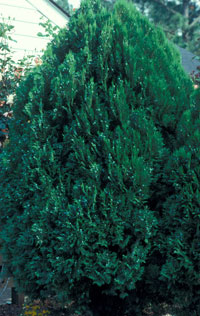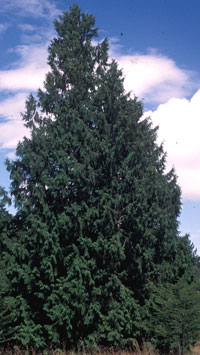 |
Arborvitae Trees & Shrubs: Types, Care, and Planting Guide
Discover the Arborvitae: NatureŌĆÖs Evergreen Marvel
Looking for the perfect shrub or tree to enhance your garden? Arborvitae shrubs and trees are a gardenerŌĆÖs dream. From towering varieties like the Thuja Green Giant to compact shrubs like ŌĆśRheingold,ŌĆÖ these evergreens offer something for every landscape. Known for their lush foliage, versatility, and remarkable longevity (some live up to 300 years!), arborvitae trees are not just beautifulŌĆötheyŌĆÖre practical too. Whether you're curious about arborvitae height, exploring different arborvitae varieties, or seeking the perfect privacy screen, we've got all the details you need to choose the ideal tree for your space.
The Arborvitae for the North, American Arborvitaes (Thuja occidentalis)are very popular landscape trees and shrubs, typically narrowly pyramidal in shape, and valued for their dense foliage. Native to the United States, some reach 200 or even 300 years of age so are sometimes called the ŌĆ£tree of lifeŌĆØ. Called variously Northern white cedar and American or Eastern arborvitae, these trees are among the big four evergreens found in American landscapes ŌĆō the others are yews, spruce, and pine. As conifers, arborvitaes bear distinctive small cones.
 |
| Oriental Arborvitae |
The Arborvitae for the South, while not as hardy as our native American arborvitae species, Oriental arborvitaes (Thuja orientalis) are widely planted because they tolerate heat, drought, and alkaline soil and have a reputation for toughness. For some reason this tree is often planted in cemeteries and is referred to as the Cemetery Plant.
 |
| Western Red Cedar |
In the West there is Western Red Cedar (Thuja plicata) which is best known as the source of cedar shingles. While common in the northwest, it is a tree that deserves more attention. It is a very nice landscape tree that is not used very often east of the Rockies. Not only is it attractive, it resists deer browsing much more than do the other two arborvitaes. The wood of Western Red Cedar is used not only for shingles, but is extensively used to make shakes, siding and poles.
Size:
American arborvitaes grow to 40 to 60 feet high, and spread to 15 feet wide at maturity. The trees reach 6 feet in 7 to 8 years from a 3 year old seedling. There are several dwarf varieties such as ŌĆśRheingoldŌĆÖ that grow to only 3 or 4 feet tall.
Oriental arborvitaes may grow to 25 to 50 feet tall, and spread to 12 feet wide. However, there are several dwarf varieties offering denser branches. They are slow-growing and smaller in growth habit.
 |
Foliage:
Leaves of American arborvitae are evergreen, soft, and scale-like, rather than needled. They are arranged in flattened, horizontal sprays. Typically medium to dark-green above, lighter beneath, some varieties have gold-tipped or yellow-green foliage. In regions where winters are very cold, sometimes arborvitae foliage turns brown in late fall and remains so all winter.
The evergreen foliage of Oriental arborvitae appears bright green above and yellow-green below, with soft, scale-like leaves arranged in more or less vertical sprays. Some shrub varieties have gold-tipped, yellow-green, or even bluish foliage. Because Oriental arborvitae are grown in milder climates, their foliage holds its color year round.
Cones: Arborvitae ŌĆ£flowersŌĆØ are actually tiny and inconspicuous 1/8-inch greenish cones appearing on ends of branchlets in April or May. Male and female are borne on the same plant. By early August the female cones have 8 to 12 scales and begin to weather to a more visible silvery color. They persist until February or so, unless birds and squirrels get them.
Attracting Wildlife - The dense foliage of arborvitae offer shelter to a wide variety of birds. Both birds and squirrels eat their small cones. Other visitors that are attracted to these shrubs are by their cones or are deer, moose and rabbits.
Arborvitae Plants from Amazon.com

